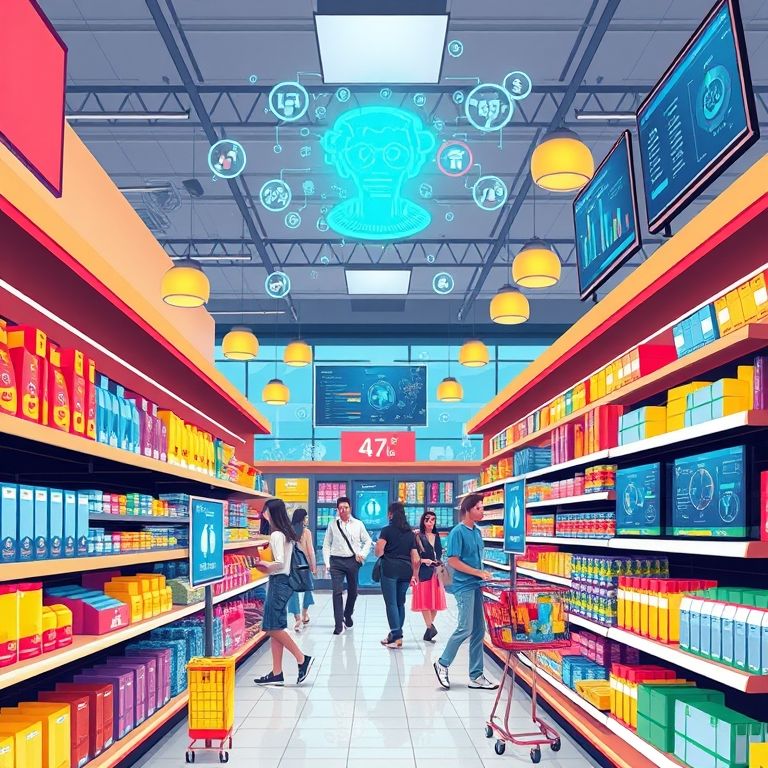
28
AI Analytics Use Cases in Retail: Transforming Sales & Customer Experience
Explore top AI analytics use cases in retail—see how smart data, predictions, and automation boost sales, optimize inventory, and personalize shopping in 2025.
Retailers face more competition—and more data—than ever before. In 2025, AI analytics use cases in retail are driving smarter business decisions, from predicting trends and managing inventory to personalizing every step of the customer journey. Here’s how artificial intelligence is transforming retail and what your business can do to keep up.
1. Personalized Shopping Experiences
AI-powered recommendation engines analyze each shopper’s history, preferences, and real-time behavior. This enables:
- Personalized product suggestions (like Amazon’s “You might also like”)
- Dynamic content and offers for every visitor
- Targeted email/SMS campaigns that boost conversion
2. Demand Forecasting & Inventory Optimization
AI analytics predict what, when, and how much customers will buy—improving both stock levels and supply chain efficiency.
- Accurate demand forecasts reduce out-of-stocks and overstocking
- Automated reordering and optimized assortment
- Lower carrying costs and higher sales velocity
3. Dynamic Pricing & Promotion Optimization
AI continuously analyzes sales, competitor pricing, seasonality, and inventory to suggest or automate real-time price adjustments:
- Maximize revenue and margin with dynamic pricing
- AI-powered promo analysis to find the best timing and offers
- Reduce manual effort and human error in pricing
4. Store Layout & Merchandising Insights
Computer vision and AI analytics track in-store shopper movements and interactions:
- Optimize product placement based on foot traffic
- Test and refine store layouts for maximum basket size
- Blend online and offline data for unified retail strategies
5. Fraud Detection & Loss Prevention
AI identifies unusual transaction patterns, return abuse, or in-store theft:
- Real-time alerts for suspicious activity
- Automated flagging and escalation for review
- Enhanced security and reduced shrinkage
6. Customer Journey & Sentiment Analysis
AI tracks the entire path to purchase—across online and offline touchpoints:
- Identify bottlenecks and drop-off points
- Analyze reviews, social media, and chat logs for customer sentiment
- Optimize campaigns and support based on real feedback
7. Workforce & Operations Optimization
AI forecasts foot traffic and predicts busy times for:
- Smarter staff scheduling and labor cost control
- Automated supply ordering aligned to store needs
- Proactive maintenance to reduce downtime
Best AI Analytics Tools for Retail (2025)
- Salesforce Einstein for Retail: End-to-end AI analytics for sales, service, and marketing (learn more)
- Microsoft Power BI: Advanced AI dashboards and forecasting (learn more)
- Google Cloud Retail AI: Demand forecasting, recommendations, and vision analytics (learn more)
- Tableau with Einstein Discovery: Automated insights for retail performance (learn more)
Real-World Example
A national fashion retailer used Google Cloud’s AI demand forecasting to adjust inventory per store and season. Out-of-stock incidents fell by 35%, and end-of-season markdowns dropped by 20% (source).
Internal Links
- AI Analytics for E-Commerce Growth
- AI Content Recommendation Engines
- AI Predictive Analytics for Sales Forecasting
Conclusion
AI analytics use cases in retail are reshaping the industry—powering smarter decisions, personalized shopping, and leaner operations. By embracing these technologies, retailers can boost profits, delight customers, and future-proof their business for 2025 and beyond.
Contact
Missing something?
Feel free to request missing tools or give some feedback using our contact form.
Contact Us